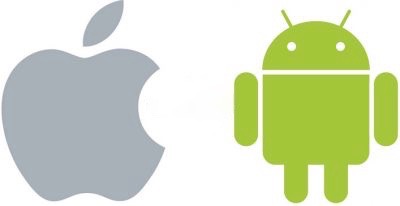When your goal is to develop a mobile app, there is one big decision you have to make: iOS or Android? And even if your startup budget is enough to do both, it is better to start with one. But how do you decide?
Start with market research
The first step is essential. Before you decide on anything, you need to make sure what you’re getting yourself into, so that your idea is implemented the best way possible. And that is impossible without understanding the market.
Know your competitors and ask yourself:
- Is their app built on Android or iOS?
- Why do people like them?
- What do you think is wrong with their apps?
That is how you find out what you have to do to ensure your app competitiveness on the market.

Find out what your customer wants
Based on the type of your business, gather your customers’ feedback on the features they would want in an app. And whether you choose Android or iOS application development, you should meet those requirements. Besides, you will build an information pool that will also be helpful in the development stage.
Mind your customers location
Yes, the choice of your app’s OS should be based on your customer geography. iOS app is your best option if you are targeting the premium markets of North America, Western Europe, or Australia. That is simply because iOS has great dominance there. If you are targeting Eastern Europe or Asia, an Android app should be your choice. And that is for the same reason of people’s preference: customers in those countries prefer Android to iOS.
And that leads us to the buying power division
iOS will most likely attract customers with good buying power since people who go for iOS are believed to be richer than those who don’t. But Android is your door to a huge market. Your app will be available to reach so many people that it will even out the gap between itself and iOS.
Now let’s move to the development itself
Due to the greater number of hardware iterations in the market, developing an Android app is more expensive than developing an iOS app. Let’s see why.
The Code
Android apps are usually written in Java, a language that involves writing more code compared to Apple’s official programming language Swift.
Open Source / Closed System
Android is an open-source platform. That implies more devices, components, and software fragmentation to consider. As Android devices differ from one another in some aspect, when it comes to testing, it has to be done for all the devices. It prolongs the testing phase and increases the overall cost of development.
Contrary to Android, Apple’s closed ecosystem implies you’re developing for only a few standardized devices and operating systems, which is cheaper and faster. However, stricter rules and quality expectations of Apple App Store entail a longer review process, so you may wait for a while for your app to be approved.
How monetization happens
As iOS users are usually more financially stable, they are more willing to splurge on apps and buy additional service or functionality within the application.
With Android, advertising is your way to make money. Even if the app itself is free, advertising will pay it off.
That means you should choose the type of monetization based on the service you will provide.
Publishing the app
Publishing an app on Google Play Store is easier. You create an account, make a one-time payment of $25, and upload an app. The users can download the app the same day.
Publishing an app on the App Store is neither that easy, nor cheap. You create an account, pay an annual fee of $ 99 or $ 299 for companies, and upload the app. After that, you wait for your app evaluation, which can take weeks. Keep in mind that you still can get rejected.
That is why, if you choose iOS app development, you need to make sure that your developers are experienced with the App Store and its app publication policy. Besides, an app on iOS should be done by professionals to match the Apple quality level and get through the App Store check.
Safety first
iOS provides more safety than Android due to the strict quality-control the App Store implies. Users don’t like getting viruses after downloading the app, but the market on Google has is filled with various apps, including those of low quality. On the contrary, the App Store puts new apps through the pre-moderation process. That means all products that you see there have been strictly monitored and are of high quality.
That is why, if you want to enter both markets, concentrate on quality first, regardless of the platform.
So, what does that all mean?
Let’s now sum up all of the above into the main pros and cons of Android and iOS app development.
Android App development means:
- Wider geographic coverage and a larger audience
- High app advertising turnover
- Quick and easy app publication
But also:
- Relatively low profit
- More complex development process
iOS App development means:
- High safety
- Outreach to an affluent tech-savvy audience
- Quick and easy development process
- High return on investment
But also:
- Lower user rate
- Lower ad monetization rate
- Strict app publishing requirements
Clearly, both have their weak and strong points, and you have to choose which advantages are your best fit and which disadvantages you are willing to face.
And the winner is
Both Android and iOS platforms are relevant and solid options. That is why, your choice should depend on the project only. Define its target users and relevant specifics as that is what will affect the whole app development process.
Generally, if you want your product to be successful globally, you cannot afford to cross out an entire group of users and will eventually have to start thinking about bringing your app on the OS you refused in the beginning.
Author bio: Lena Ivanova
Lena Ivanova is a Marketing Specialist at Redwerk Software Development Company with background and broad expertise gained through experience in the IT industry.



